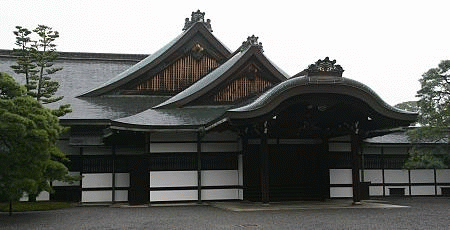
Although archaeological evidence places the first human settlement on the islands of Japan to approximately 10,000 BC, relatively little is known about human activity in the area before the 6th century AD. During the 8th century, when the powerful Buddhist clergy became involved in the affairs of the Imperial government, the Emperor chose to relocate the capital to a region far from the Buddhist influence. Emperor Kammu selected the village of Uda, at the time in the Kadono district of Yamashito Province, for this honor. The new city, Heian-kyo( "tranquility and peace capital"), became the seat of Japan's imperial court in 794, beginning the Heian period of Japanese history. Later, the city was renamed Kyoto ("capital city"). Kyoto remained Japan's capital until the transfer of the government to Edo in 1868 at the time of the Imperial Restoration. (Some believe that it is still a legal capital: see Capital of Japan.) After Edo was renamed Tokyo (meaning "Eastern Capital"), Kyoto was known for a short time as Saikyo ( Saikyo, meaning "Western Capital"). An obsolete spelling for the city's name is Kioto; it was formerly known to the West as Meaco or Miako (Japanese: miyako "capital"). Another term commonly used to refer to the city in the pre-modern period was Keishi, meaning "metropolis" or "capital". The city suffered extensive destruction in the nin War of 1467-1477, and did not really recover until the mid-16th century. Battles between samurai factions spilled into the streets, and came to involve the court nobility (kuge) and religious factions as well. Nobles' mansions were transformed into fortresses, deep trenches dug throughout the city for defense and as firebreaks, and numerous buildings burned. The city has not seen such widespread destruction since. Although there was some consideration by the United States of targeting Kyoto with an atomic bomb at the end of World War II, in the end it was decided to remove the city from the list of targets due to the "beauty of the city" (See Atomic bombings of Hiroshima and Nagasaki), and the city was spared conventional bombing as well.
Kyoto became a city designated by government ordinance on September 1, 1956. In 1997, Kyoto hosted the conference that resulted in the protocol on greenhouse gas emissions that bears the city's name. A common English pronunciation of Kyoto has three syllables as /key-oh-toe; however, the Japanese pronunciation has only two. |
|
|
